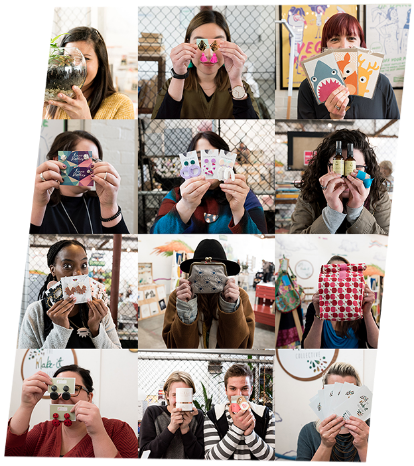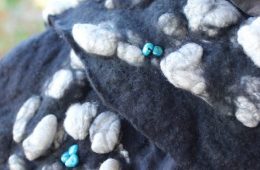Selling handmade products wholesale is a momentous achievement for handmade artisans. For some, it’s a goal they’ve worked towards for years… building their brand, refining designs, streamlining production and sourcing the most cost-effective materials.
Landing your first wholesale gig is not only a massive achievement, but also a huge relief, knowing the products you’re making have already sold – without having to face frosty winter mornings at the markets!
If you’re considering selling handmade products wholesale, follow these tips to land your first order with the right retailer.
Nail Your Pricing
Pricing handmade products may be the least exciting part of the job, but when it comes to selling wholesale, you’ve gotta get it right from the start. There are various pricing formulas available for selling handmade products wholesale, so just be sure whichever you choose takes into account all your expenses and the cost of your labour.
Handmade marketplace Etsy suggests multiplying your break-even price by at least two to arrive at a wholesale price that helps both makers and retailers achieve a fair profit. Let’s break that down…
Break-Even Price = Supplies + Overheads + Labour
Supplies = cost of supplies to produce your product (fabric, paint, paper, clay, leather, glue, beads etc)
Overheads = expenses like rent, equipment, advertising, transport etc. Add up the monthly cost and divide that number by the number of items you’d like to sell each month for a rough idea of overhead costs.
Labour = decide on the hourly wage for you and any employees, then multiply that by the time it takes to produce each item, remembering the skills, qualifications and knowledge required to do what you do.
Break-Even Price x 2 = Wholesale Price

For info on suggesting recommended retail prices and volume pricing to incentivise large orders checkout this article.
Be Selective With What You Offer
Wholesale could be the difference between leisurely selling 20 units at a market that you’ve spent months making, and fulfilling an order for 200 units before a shop opens in two weeks’ time. At some point production is going to dramatically increase, even if you’ve got a stash ready to go for your first order. And if your products sell well, you’ll have re-orders before you know it!
To maximise efficiency and fulfil orders within a reasonable time, you may want to limit the product lines you offer at wholesale prices. Choose the products that have the most efficient production processes, with the highest profit margin. By striking this balance you’ll ensure you’re producing quality products quickly with the highest possible returns.

Periodically Review Material Costs
When was the last time you shopped around for materials? Suppliers’ prices change over time… They grow and pass savings onto customers… Lower prices when a competitor enters the market… Discount for EOFY… Offer seasonal sales… Slash prices on materials reaching expiry… There’s even the odd closing down sale.
Keep an eye on competing suppliers by signing up for their newsletters and be in the know about changing prices to ensure you’re always getting the best value. You’re ordering wholesale quantities now too, so the discounts available should be greater, and the more you save on materials, the more you’ll profit from each product.
When wholesaling, you need to wear the cost of buying bulk quantities until orders are paid in full, so put money aside now to prepare for wholesaling in the future.
Be Choosey About Who You Sell To
Every sale’s a good sale, right?! If you’re driven purely by profit, sure. If however the reason you started your handmade business was to reduce your carbon footprint, create one-of-a-kind gifts made with love, or build a home-business that gives you more time with your family, consider how these goals and values align with the retailers you’re pitching to.
Find like-minded businesses who share your vision for ethical consumerism and fully appreciate the long hours and learned skills that have gone into each and every one of your products. Remember to set clear expectations around order size and delivery times in the very beginning as well, so your part-time business doesn’t become a full-time headache.
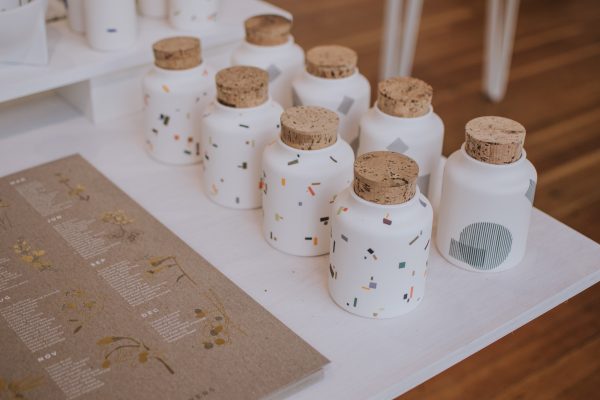
Create a Hit List
You’ve probably got a couple of businesses in mind that you’d love to stock your products. Add them to the top of a spreadsheet which includes the following columns:
- Shop Name
- Owner’s Name
- Website
- Address
- Phone
- Product/s Pitching
- Call / Email / Visit Date
- Info Pack Received (Y/N)
- Sample Received (Y/N)
- Follow Up Notes (Outcomes, Objections, Feedback)
Keep building this list until you’ve got at least 10 businesses that stock complementary products with a recommended retail price similar to yours (wholesale price x 2 or more) and keep it updated throughout the pitching process.
Focus on local retailers first to keep delivery times and costs to a minimum while reducing your transport emissions. Then when you’ve exhausted all local options, cast your net further and check out retailers in neighbouring suburbs and towns.

Prepare Your Pitch
Whether your first point of contact is email, over the counter, or you’ve been approached at a market, have a beautifully branded wholesale pack ready to give retailers with product images, benefit-driven product descriptions and a list of wholesale prices that can be emailed as a PDF, or printed for distributing in-person. VistaPrint offer a range of presentation folders great for collating your pitching docs.
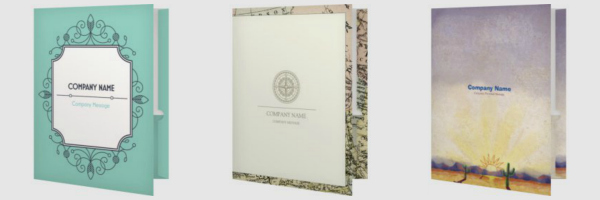
Now, what to include in your wholesale pack…
Single-Page Cover letter insert
This includes a concise description of your brand and products, including a customised section about how you discovered the store, what you like about their brand and the products they sell, and how your handmade products complement their range and add value to their customers. Where possible, find out the name of the owner and personally address the letter to them. Keep this letter short, around 3-5 paragraphs is ideal.
About Section (Within Your Wholesale Catalogue)
Here you can go into more detail about your story, how and why you started making handmade and info about your production process and materials. If you’ve got other wholesale customers, list them in this section, along with any media coverage you’ve had and a couple of customer testimonials. Limit this to 1-2 pages and include some photos of you working on your products to bring this section to life.
Product pages
If your product images are lacklustre, invest in a professional photographer to take some high-quality images – it will pay for itself in the long run! If your budget is tight, consider offering photographers the products you need photographed in exchange for the shoot. More detailed products should have multiple images showcasing different angles, and every product should have a brief description outlining the features and benefits. Include any minimum order requirements and give each product a Product ID that can be listed on your order form.
Order Form Insert
An order form is a single page insert that retailers will send to you by fax or email to place an order. It should include your business branding and contact details, along with a space for the retailer’s contact and delivery details. It includes a table for customers to list the products and quantities they want to purchase and allows them to calculate total costs.
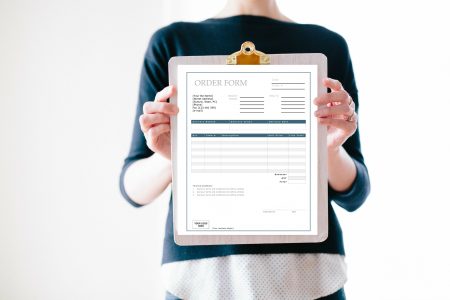
Hiring a Graphic Designer
A graphic designer will help you present your information in a clear and logical format for prospects to flick through and easily find the information they need to reach a decision. Quality graphic designers can be found at affordable rates on Upwork and Fiverr. Search for designers who specialise in catalogues and ask to see their portfolio to view similar work.
Great, Info Pack Done… Now It’s time for Your Elevator Pitch
An elevator pitch is a succinct overview of your business that can be delivered in no more than 30-60 seconds (or during the course of a brief elevator ride). It tells prospects the WHO, WHAT, WHERE, WHEN, WHY and HOW of your business, and should highlight any unique aspects of your products. For example…
“Hi, I’m [NAME]. I make [PRODUCT] using [SPECIAL MATERIALS/SKILLS] that are ideal for [TYPES OF CUSTOMERS/OCCASIONS/PURPOSES]. My products have [FEATURES X, Y, Z] that give customers/allow customers to [BENEFITS X, Y, Z]… Would you mind if i showed you a couple of products I think would sell really well in [SHOP NAME]?”
When delivering your pitch, don’t recite it word-for-word. Be flexible and use it more as a guide for pitching in person or over the phone to get the conversation rolling naturally.
![]()
Deliver Your Pitch
Get ready to pull on your cape, Super Maker… it’s time to promote your products! If sales isn’t your strong suit, don’t worry – the more you practice and rework your pitch (taking into account retailers’ feedback and objections) the more confident you’ll feel about approaching prospective wholesale buyers. To get you started, choose the pitching strategy below you’re most comfortable with…
Brave
Check retailers’ websites to see if they have a protocol for accepting wholesale applications. If there’s no formal process and you’re feeling brave, pick up the phone and give them a call. Let them know you’d like to provide a sample of your work and get the contact details of the best person to send a sample to, or arrange a time to drop in and present your collection.

Bold
There’s no substitute for face-to-face communication. Pack some samples, grab your info packs and drop into the shops on your hit list. Avoid peak times so you have the full attention of shop owners. If the owner isn’t available, leave your info pack and product sample to be passed on, then follow up with a call the next day to confirm they received the pack and arrange a time to show them the rest of your collection.

Bashful
If you’re shy and prefer to pitch from the safety of your studio, email retailers an info pack and let it do the heavy lifting before calling the following day to confirm they received it. On the call, butter them up by offering to drop in a free sample. This should be enough to get you in the door, where your products will speak for themselves and you can be on hand to answer questions.

Value Retailers’ Feedback
Be proactive in asking for retailers’ feedback during the pitching process, and again with every re-order. If your products are selling in a brick and mortar store, staff may be able to provide feedback from interactions with customers and conversations they’ve overheard between shoppers…
- “It’s too expensive”
- “I wish it came in blue”
- “It’s too heavy to send in the mail”
- “I’m allergic to eucalyptus”
- “The material is too clingy”
This information is extremely valuable in terms of product variety, functionality, quality and pricing, so view it as an opportunity to improve your products and make more sales.
Similarly, for e-commerce retailers, check their product reviews regularly for customer feedback, not just about your products, but also regarding the retailer’s delivery times and service. If negative feedback becomes a regular occurrence, review your relationship with the retailer to ensure it doesn’t negatively reflect on your brand.
![]()
Consider Consignment
Some brick and mortar shops like The Make It Collective in Northcote operate on a consignment basis, whereby the Maker rents space in the retailer’s shop for a monthly fee, then the shop keeps a percentage of each sale.
This model offers Makers an alternative to dropping prices for wholesale, as well as allowing you to stock whatever you choose and test new products in the market to find your best-sellers.
Get in touch for more info on showcasing your products at The Make It Collective.
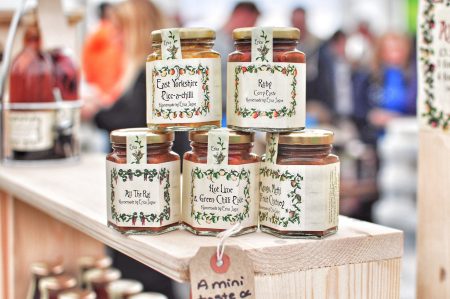
Are You Ready to Start Selling Handmade Products Wholesale?
While selling wholesale is an exciting prospect, few makers land an order from the very first retailer they approach. Don’t be put off if it takes 10, 20… even more rejections before you find the perfect fit for your brand and a retailer that truly appreciates the quality of your work.
It takes trial and error to perfect your pricing and your pitch, and every ‘no’ should be viewed as an opportunity to improve. Remember, selling handmade products wholesale is more than a quick sale; it’s about entering into a mutually beneficial partnership, so don’t just take whatever comes your way – stick to your glue guns until you find the right fit!
Where are you on the road to selling wholesale and what have you learned along the way? We’d love to hear about it over on The Make It Collective Facebook Page.











